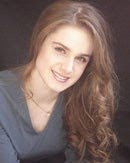In this series of blog posts, I will be discussing Bernoulli's book "The Art of Conjecturing." I have been studying this book for one of my Math classes and I will present here some of my research.
Preface
Jacob Bernoulli, older brother of Johann Bernoulli I, was born in 1654 and died in 1705. He lived in Basel, Switzerland all his life and after much hard work became the professor of mathematics at Basel University in 1687, serving until his death – at which time his brother, Johann promptly received the position. The Bernoulli brothers were the beginning of several generations of Bernoullis who made significant contributions to science and mathematics. For this reason, one can be easily confused about who is being mentioned when only the last name “Bernoulli” is used. To further complicate matters, there is repeated use of family names in the Bernoulli family tree making it difficult to distinguish which “Jacob,” “Johann,” and especially “Nicolaus” is being referred to. Also, there are many different spelling variations of each name in circulation, e.g. Jacob is also known as Jakob, James, Jacobus, and Jacques.
For clarity, here is a copy of a portion of the Bernoulli family tree as found in The Art of Conjecturing:
Jacob conceived to write about “the art of conjecturing” in 1685. His first published evidence of this interest is in the Journal des Scavans for August 26, 1685 where he presents a problem concerning the throwing of dice and proposes the question as to the ratios of their lot. There is also evidence of his interest in probability found in his research journal Meditationes, and from letters that he wrote; among them “Letter to a friend on sets in court tennis,” which is included at the end of the book The Art of Conjecturing. In fact, in one of his public disputations given in competition for professorship in Mathematics at Basel, he discussed what appears as his 11th Corollary in Ars Conjectandi, concerning lottery slips drawn from an urn.
Ars Conjectandi was never completed and fell to the care of his son, Nicolaus, who later gave the manuscript to the Thurneysen brothers who published it in 1713. Though parts of Ars Conjectandi were translated and published one-by-one through the years, the last section of the book was finally completed as Bernoulli wished and The Art of Conjecturing was published in 2006. It is the first complete translation into English, and includes notes and commentary. Although other mathematicians began to write articles concerning probability contemporaneously with Bernoulli, “Ars Conjectandi deserves to be considered the founding document of mathematical probability” (Hopkins, vii).
It is truly amazing to see the beginnings of probability and statistics and read through Bernoulli’s thoughtful and thorough explanations. Though notes are often given on any particular proposition, many times they are not needed to fully grasp Bernoulli’s original notes due to his clear and explicit writing style. The Art of Conjecturing is divided up into 4 parts: Part One: “Nuygens’s Treatise on Reckoning in Games of Chance,” Part Two: “The Doctrine of Permutations and Combinations,” Part Three: “The Use of the Preceding Doctrine in Various Ways of Casting Lots and Games of Chance,” Part Four: “The Use and Application of the Preceding Doctrine in Civil, Moral, and Economic Matters.” Here we will discuss a few propositions and conclusions from each of these four parts and see how they fit together.

For some reason my family tree wouldn't post. Hmmmm....
ReplyDelete